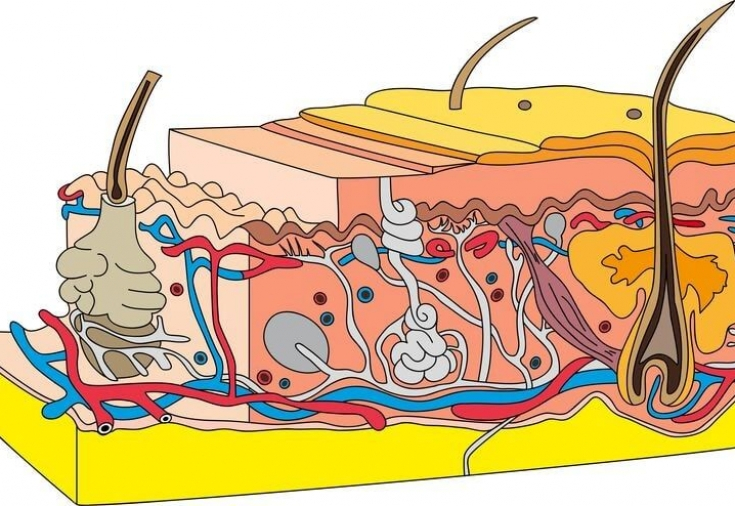Patient's appeal to a cosmetologist about unaesthetic fat accumulations – so-called fat traps happen quite often. Convinced that problem areas in the abdomen, back or knees are not amenable to either a rigid diet or daily jogging, patients in pursuit of a chiseled figure want to remove these fat deposits at any cost.
What is the price of removing fat from problem areas of the patient, and why it is worth carefully adjusting fat traps, considered estet-portal.com.
Why our body stores fat in reserve
Patients who come to the appointment for the correction of problem areas often have a rather vague idea of why, in fact, overhanging folds have formed in the area above the knees, in the lower part of the buttocks or on the back, and why the lower abdomen is not pumped in any way exercises to a flat state. On the Internet you can find any information about problem areas – from the accumulation of toxins to the deposition of water with toxins. Perhaps it will be useful for the patient to know that the problem areas of her figure are formed by adipose tissue and did not turn out by chance, as well as that adipose tissue – this is not an enemy that must be fought to the bitter end.

The adipose tissue of the human body performs a number of very important functions for life:
- Create energy reserves. The trophic function of adipose tissue is that the excess nutrients that we received from the foods we eat and assimilated are transformed in a certain way and turn into triglyceride molecules. Adipose tissue reserves triglycerides and uses them as needed: for example, when the body urgently needs additional energy, triglycerides are quickly broken down to release the necessary resources. In order to always have enough reserve energy, adipose tissue cells are able to increase in size many times over, accumulating incoming triglycerides, and under certain conditions, under the influence of hormones, even the number of additional fat cells can grow.
Subscribe to our page on Instagram!
- Regulate heat transfer. Adipose tissue insulates the body from hypothermia, at very low temperatures, fat breaks down faster and increases heat production to warm the body. If it is very hot around, then endogenous water is released during the breakdown of fats, which evaporates from the skin, giving us the opportunity to cool down.
Subscribe to our page on Facebook!
- To save and protect. Adipose tissue protects the body not only from temperature changes, it reliably isolates nerve endings and bundles of blood vessels that are located under the skin from external influences, and also provides wound healing processes on the skin. In addition, fat cells are able to store, in addition to energy, also water, and fat-soluble vitamins, and steroid hormones.
The function of adipose tissue, which is especially important for the female body – it is her ability to synthesize estrogens and the hormone leptin.
Fans of strict diets probably know that with strong weight loss, amenorrhea or even premature menopause may well occur – due to insufficient production of estrogen in the body, and reduced production of leptin will lead to an increase in appetite and the fact that any fat that enters the body will be immediately deposited in reserve.
Because of what fat traps form on the body
Adipose tissue in some areas of the female body has a particularly high hormonal activity: in such areas, androgens synthesized by the ovaries and adrenal cortex are collected and transformed into estrone. During this reaction, capillary permeability increases, the synthesis of structural fibers decreases, and the sensitivity of cell receptors responsible for lipolysis decreases. The result of such transformations and accompanying processes is the development of pastosity and edema of adipose tissue in those areas that we then call problematic – this is usually the lower and middle part of the buttocks, thighs, lower abdomen and knee area.

Over time, a gradual increase in volume is observed in these places, the connective tissue becomes denser, acquires a specific "grain", and if these changes are not counteracted, then the skin will begin to resemble an orange peel, acquire friability and unevenness.
Collagen and elastin fibers in the surface layers of the connective tissue of both women and men are lamellar, so that assumptions about protrusion of fat-filled cells through the cells between the fibers look ridiculous.
Thus, problem areas or fat traps in women are not related to nutrition or lifestyle disorders, but slightly depend on the level of physical activity. These fat accumulations are physiologically determined and perform important endocrine functions. You can slow down the processes of compaction and accumulation of fatty tissue in problem areas by regular massage procedures, lymphatic drainage, and the use of high-quality cosmetic preparations. If the patient seeks to remove fat traps, it should be recalled that injury to adipose tissue in these areas can disrupt the entire reproductive system.
More interesting stuff is already waiting for you on our YouTube channel:






Add a comment